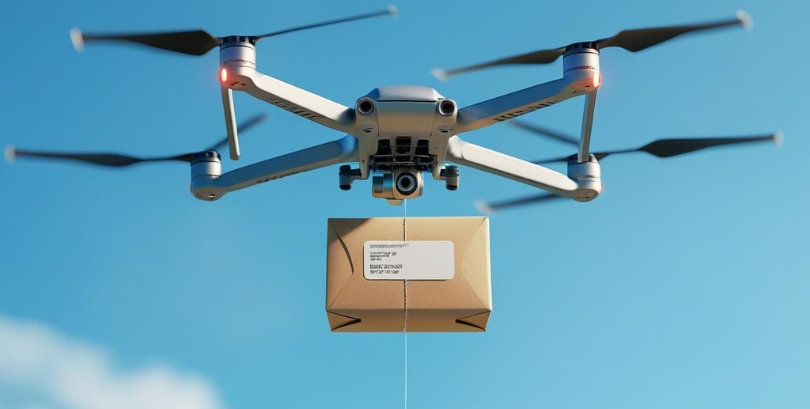Robotics
Drone Delivery: Transforming the Logistics Industry

In recent years, drone delivery has emerged as a game-changer in the logistics industry. What was once considered futuristic is now a fast-growing reality. Companies like Amazon, UPS, and DHL are investing heavily in drone technology to improve last-mile delivery. With the ability to bypass road traffic and reach remote areas quickly, drones offer a flexible solution to modern delivery challenges.
Also Read: What Sci-Fi Got Right (and Wrong) About Today’s Robots
Discover the impact of drone delivery on logistics.
As companies continue to innovate and regulations evolve, we can expect drone delivery to become a cornerstone of modern logistics, reshaping the way goods are transported across the globe.
Speed and Efficiency Redefined
One of the most significant advantages of drone delivery is the dramatic reduction in delivery times. Traditional delivery methods often face delays due to traffic, road conditions, or labor shortages. Drones, on the other hand, can deliver packages in a matter of minutes, especially in urban or densely populated areas. This speed not only improves customer satisfaction but also boosts the overall efficiency of logistics operations.
Cost Reduction and Environmental Benefits
Adopting drone delivery can also lead to substantial cost savings for logistics companies. By automating deliveries and reducing dependency on human drivers and fuel-powered vehicles, companies can lower their operational costs. Additionally, drones are generally powered by electricity, which reduces carbon emissions and contributes to a more sustainable supply chain. As environmental concerns become more prominent, drone-based logistics offer a greener alternative.
Expanding Access to Remote and Underserved Areas
Drone technology is not just about convenience—it’s about accessibility. Drone delivery enables service to rural or hard-to-reach regions where traditional delivery trucks might struggle. Medical supplies, food, and essential goods can now reach remote areas quickly and safely. This capability is particularly critical during emergencies or natural disasters when timely deliveries can save lives.
Regulatory Challenges and Future Outlook
Despite the benefits, drone delivery still faces several hurdles. Regulatory bodies across the globe are grappling with how to manage air traffic, safety, and privacy concerns. However, as technology advances and pilot programs show promising results, governments are beginning to adapt. The future of drone logistics looks promising, with experts predicting widespread adoption in the next decade.
Conclusion
Drone delivery is rapidly transforming the logistics industry by enhancing speed, reducing costs, and increasing reach. While challenges remain, the benefits far outweigh the obstacles.
Tags:
Robotics ApplicationsRobotics TrendsAuthor - Abhishek Pattanaik
Abhishek, as a writer, provides a fresh perspective on an array of topics. He brings his expertise in Economics coupled with a heavy research base to the writing world. He enjoys writing on topics related to sports and finance but ventures into other domains regularly. Frequently spotted at various restaurants, he is an avid consumer of new cuisines.


